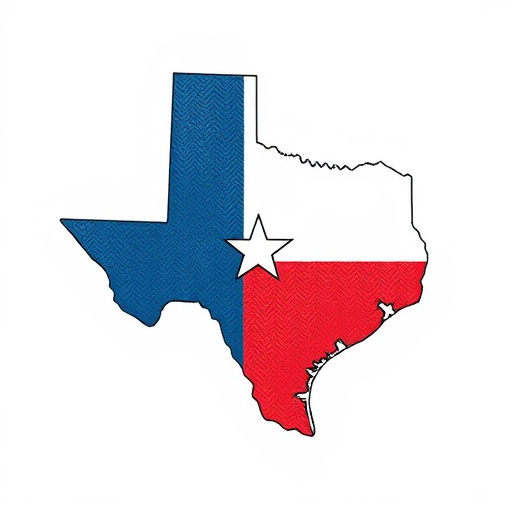2023 marks an exciting year for Texas exploration, with a variety of transportation options catering to diverse travel preferences. Texas offers extensive intercity travel by air via major hubs like George Bush Intercontinental Airport and Dallas/Fort Worth International Airport, and complementary regional airports. For those preferring train travel, Amtrak's Texas Eagle and Heartland Flyer provide scenic routes between key cities, while the state's comprehensive highway network, including major routes like I-10 and I-35, connects urban centers. Regional bus services and car rentals offer additional intercity travel options. Maritime enthusiasts can explore Texas' Gulf Coast and inland waterways with the Texas State Ferry system and various boat tours. RV rentals are available for those who wish to travel at their own pace, with numerous campgrounds and RV parks scattered throughout the state. Texas Travel Tips stresses the importance of early planning to navigate its varied terrains, ensuring a seamless and enriching experience. Additionally, Texas' urban centers boast ride-sharing services like Uber and Lyft, alongside established public transportation networks that align with regional authorities' Texas Travel Tips for efficient city travel. These options, combined with the state's scenic drives and special event trains, promise a memorable journey through Texas' rich landscapes and cultural heritage.
Embark on a journey across the expansive Lone Star State with our definitive guide to Texas transportation options. Whether you’re plotting a cross-country road trip, catching a flight to a bustling city, or setting sail on tranquil waters, this article offers insider Texas travel tips for seamless navigation. From Amtrak routes to scenic highways, and from major airports to nautical ferry services, explore the diverse travel methods that will enhance your Texas adventure. Discover the convenience of ride-sharing and public transit in metro areas, ensuring a smooth voyage throughout the state’s varied landscapes.
- Exploring the Lone Star State: A Comprehensive Guide to Texas Transportation Options
- Amtrak Across Texas: Scheduling and Routes for Train Travel Enthusiasts
- The Ultimate Road Trip: Major Highways and Scenic Byways in Texas
- Flying High: Airports and Airline Services Connecting Texas Cities
- Navigating Waterways: Boat and Ferry Services for Nautical Explorers
- Ride-Sharing and Public Transit: Accessible Travel Within Texas Metro Areas
Exploring the Lone Star State: A Comprehensive Guide to Texas Transportation Options

Texas is a vast and diverse state, encompassing a multitude of landscapes and cities that offer a rich array of experiences for travelers. To navigate this expanse effectively, it’s crucial to have a well-rounded understanding of the transportation options available. Texas Travel Tips advises planning your journey with the state’s varied terrains in mind, whether you’re exploring the urban sprawl of Houston or the desert vistas near El Paso. The network of highways and interstates provides efficient road travel, facilitated by a robust car rental service found in major cities like Dallas and Austin. For those preferring to fly, Texas boasts numerous airports with domestic and international flights, making intercity travel swift and straightforward. Amtrak’s Texas Eagle route connects several key cities, offering scenic views alongside the convenience of train travel. Additionally, regional bus services like Greyhound and regional carriers provide extensive networks for intercity coach travel, catering to budget-conscious travelers.
Inland waterways and a network of ferries along the Texas Gulf Coast also offer unique travel experiences, perfect for those wishing to explore coastal towns or reach offshore destinations like South Padre Island. For an authentic Texan adventure, consider renting an RV and embarking on a road trip across the state, with plenty of campgrounds and RV parks available along the way. Regardless of your chosen mode of transportation, Texas Travel Tips emphasizes the importance of advance planning to ensure a smooth journey across the Lone Star State’s diverse terrains. With careful consideration of your itinerary and transportation needs, Texas can be navigated with ease, allowing you to fully enjoy all the state has to offer.
Amtrak Across Texas: Scheduling and Routes for Train Travel Enthusiasts

Texas boasts an extensive Amtrak network that caters to travel enthusiasts seeking a scenic and comfortable journey across its vast expanses. With routes like the Texas Eagle, which links Chicago with Los Angeles, passing through the heart of Texas, passengers can witness the state’s diverse landscapes from the comfort of their seats. For those embarking on an in-state adventure, the Amtrak Heartland Flyer offers a daily service between Dallas and San Antonio, providing a window to the local culture and the state’s rich heritage. To plan your journey, the official Amtrak website and Texas Travel Tips resources offer detailed scheduling and route information. Travelers can utilize these tools to navigate schedules, view train stations across the state, and find the best itineraries that align with their travel plans. Whether you’re a local or a visitor exploring Texas by train, the scheduling and routes available through Amtrak are designed to offer a seamless and memorable travel experience.
When considering train travel in Texas, it’s advisable to book your tickets well in advance, especially during peak seasons. The state’s vastness means that travel times can be considerable, but the journey is enriched by the views of its varied terrains, from the rolling hills of the Edwards Plateau to the coastal plains along the Gulf of Mexico. To maximize your experience, Texas Travel Tips recommends checking out the special event trains and themed excursions that run throughout the year, which can add an extra layer of enjoyment to your rail journey. With careful planning and a bit of adventure, Amtrak’s routes across Texas promise a journey filled with discovery and comfort.
The Ultimate Road Trip: Major Highways and Scenic Byways in Texas

Embarking on a road trip across Texas offers an adventure through diverse landscapes and vibrant cities, with a network of major highways and scenic byways that cater to every kind of traveler. The Lone Star State’s extensive highway system, including Interstate 10 and Interstate 35, provides the backbone for long-distance journeys, connecting bustling urban centers like Houston and San Antonio with the state’s southern and central regions. For those seeking a more leisurely pace and immersion in Texas’ natural beauty, the Lone Star State boasts an array of scenic byways, such as the Caprock Canyon Trailway and the Bluebonnet Trail, which offer opportunities to explore the state’s rich history, unique wildlife, and iconic wildflowers.
When planning your road trip, Texas Travel Tips recommend mapping out your route with a mix of these major highways and scenic byways to ensure a balanced experience. For instance, one could take I-10 from El Paso to San Antonio, then transition onto the Texas Hill Country Scenic Byway to savor the rolling hills dotted with wildflowers before rejoining I-35 to reach your final destination. Along the way, travelers can make use of local guides and travel resources available through the Texas Department of Transportation to find points of interest, rest stops, and dining options that enhance the journey. With careful planning and a spirit of adventure, a road trip across Texas can be a memorable and seamless travel experience, filled with discoveries and unforgettable sights.
Flying High: Airports and Airline Services Connecting Texas Cities

Air travel is a cornerstone of intercity transportation in Texas, with an extensive network of airports and airline services that connect its major cities efficiently. The state boasts a robust aviation infrastructure, ensuring Texas Travel Tips are easily accessible to those looking to navigate the skies above Texas. Central to this network is George Bush Intercontinental Airport (IAH) and Dallas/Fort Worth International Airport (DFW), both of which serve as primary gateways to the state’s economic centers, Houston and Dallas, respectively. These international airports offer a plethora of flights to domestic and international destinations, catering to both business and leisure travelers.
Moreover, Texas is home to several regional airports that provide seamless connections within the state. Austin-Bergstrom International Airport (AUS) and San Antonio International Airport (SAT) are key players in central Texas, offering flights to popular destinations and contributing to the state’s travel ecosystem. In the western regions, Robert Gray Amon Carter Field (DAL) and William P. Hobby Airport (HOU) in Houston serve as pivotal hubs for those exploring the southern and eastern parts of Texas. With a comprehensive array of flight options, Texas’s airline services are designed to facilitate convenient travel experiences, making it easier than ever to navigate between the Lone Star State’s diverse cities with ease.
Navigating Waterways: Boat and Ferry Services for Nautical Explorers

For nautical enthusiasts and travelers seeking a unique travel experience, Texas’ extensive network of waterways offers an array of boat and ferry services that provide access to some of the state’s most scenic destinations. These aquatic pathways not only serve as a gateway to picturesque coastal towns and secluded beaches but also offer a leisurely alternative to road travel, allowing visitors to take in the sights and sounds of Texas’ water landscapes. The Texas State Ferry system, for instance, connects key locations across the state, including the popular run between Port Aransas and Copano Bay, offering reliable and scenic crossings that are integral to local commerce and a boon for tourists. Additionally, private and charter boat services can be found along the coast, catering to various needs, from fishing excursions to sightseeing tours, providing Texas Travel Tips that ensure a smooth and enjoyable journey on the water. Whether you’re looking to explore the Gulf Coast or navigate the tranquil waters of one of Texas’ many lakes and rivers, these aquatic transportation options are tailored to offer an unforgettable travel experience across the Lone Star State.
Ride-Sharing and Public Transit: Accessible Travel Within Texas Metro Areas

Texas’ vast landscape necessitates a robust transportation system to cater to its residents and visitors alike. Within the state’s metropolitan areas, travelers have access to a variety of options that ensure seamless movement across cities. Ride-sharing services like Uber and Lyft have become integral to urban commutes in Texas, offering convenient and reliable transportation with just a few taps on a smartphone app. These services are particularly beneficial for those who prefer the comfort of a private ride or require flexible scheduling outside the fixed routes of public transit.
In contrast, Texas’ metropolitan areas boast extensive public transit systems tailored to accommodate diverse travel needs. The Dallas Area Rapid Transit (DART), Houston METRO, and Austin Capital Metro are just a few examples of the comprehensive networks that provide bus and rail services across their respective regions. These agencies collaborate with regional transportation authorities to offer Texas Travel Tips that help navigate the systems efficiently. For instance, in Houston, the METRORail connects key business districts, entertainment venues, and cultural institutions, providing an economical alternative to driving. Similarly, Austin’s bus and light rail services are designed to optimize travel within the city, while San Antonio’s VIA Metropolitan Transit offers a blend of traditional and modern transit options to serve its community effectively. These public transit options not only facilitate accessible travel within Texas metro areas but also contribute to reducing congestion and promoting environmental sustainability.
Texas presents a mosaic of transportation options that cater to every traveler’s needs, ensuring that exploration is both convenient and enriching. Whether one prefers the open road, the rails, the skies, or even the waterways, Texas offers diverse and accessible travel routes. From the comprehensive networks of major highways and scenic byways to the convenience of Amtrak’s Texas routes, and from the efficiency of regional airports to the nautical adventures on boat and ferry services, travelers are well-served throughout the state. Additionally, ride-sharing and public transit in metro areas provide seamless connections within cities, aligning with Texas Travel Tips that prioritize user-friendly and informative travel resources. When embarking on your Texas journey, remember to utilize these varied transportation methods to create an unforgettable travel experience.


